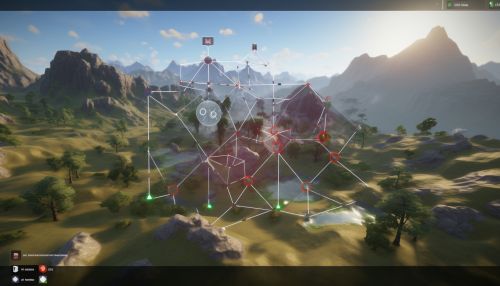Region proposal network
Introduction
A Region Proposal Network (RPN) is a type of convolutional neural network (CNN) that is used in object detection tasks. It is a key component of faster R-CNN, a popular framework for real-time object detection. The RPN plays a crucial role in generating region proposals that are likely to contain objects. This article delves into the intricacies of the RPN, its structure, working mechanism, and its role in object detection.


Structure of a Region Proposal Network
A Region Proposal Network is a fully convolutional network that simultaneously predicts object bounds and objectness scores at each position. The network is trained end-to-end to generate high-quality region proposals, which are used by a Fast R-CNN for detection. It shares full-image convolutional features with the detection network, enabling nearly cost-free region proposals.
The RPN takes an entire image as input and outputs a set of rectangular object proposals, each with an objectness score. It does this by sliding a small network over the convolutional feature map output by the last shared convolutional layer. This small network takes as input an n x n spatial window of the input convolutional feature map. Each sliding window is mapped to a lower-dimensional feature, which is fed into two sibling fully-connected layers—a box-regression layer (reg) and a box-classification layer (cls).
Working Mechanism of a Region Proposal Network
The RPN works by using a set of anchors. An anchor is essentially a reference box that is used to scale and size the proposals. The network uses multiple anchors at each sliding position to handle multiple scales and aspect ratios. The anchors are designed to be translation-invariant, meaning that if objects are translated in an image, the same proposals should be made by the RPN.
The RPN proposes regions by adjusting the anchors. For each anchor, the network outputs two values for the reg layer and two values for the cls layer. The reg layer outputs the coordinates of the proposed region, while the cls layer outputs the probability of the proposed region containing an object.
The RPN is trained using a binary classification loss for the cls layer and a smooth L1 loss for the reg layer. The classification loss encourages the network to propose regions that contain objects, while the regression loss encourages the network to propose regions that tightly fit the objects.
Role of a Region Proposal Network in Object Detection
In an object detection task, the role of the RPN is to generate region proposals that are likely to contain objects. These region proposals are then used by a Fast R-CNN for detection. The RPN and the Fast R-CNN are trained jointly, sharing the convolutional layers. This joint training allows the region proposal task to be informed by the downstream detection task, leading to higher-quality region proposals.
The RPN plays a crucial role in the faster R-CNN framework, enabling real-time object detection. By sharing convolutional features with the detection network, the RPN allows for nearly cost-free region proposals. This is a significant improvement over previous methods of region proposal, which were computationally expensive and could not be done in real-time.
Conclusion
The Region Proposal Network is a key component in modern object detection frameworks. By generating high-quality region proposals in a computationally efficient manner, the RPN has enabled real-time object detection. Its structure and working mechanism are designed to propose regions that contain objects and fit them tightly, leading to improved detection performance.
